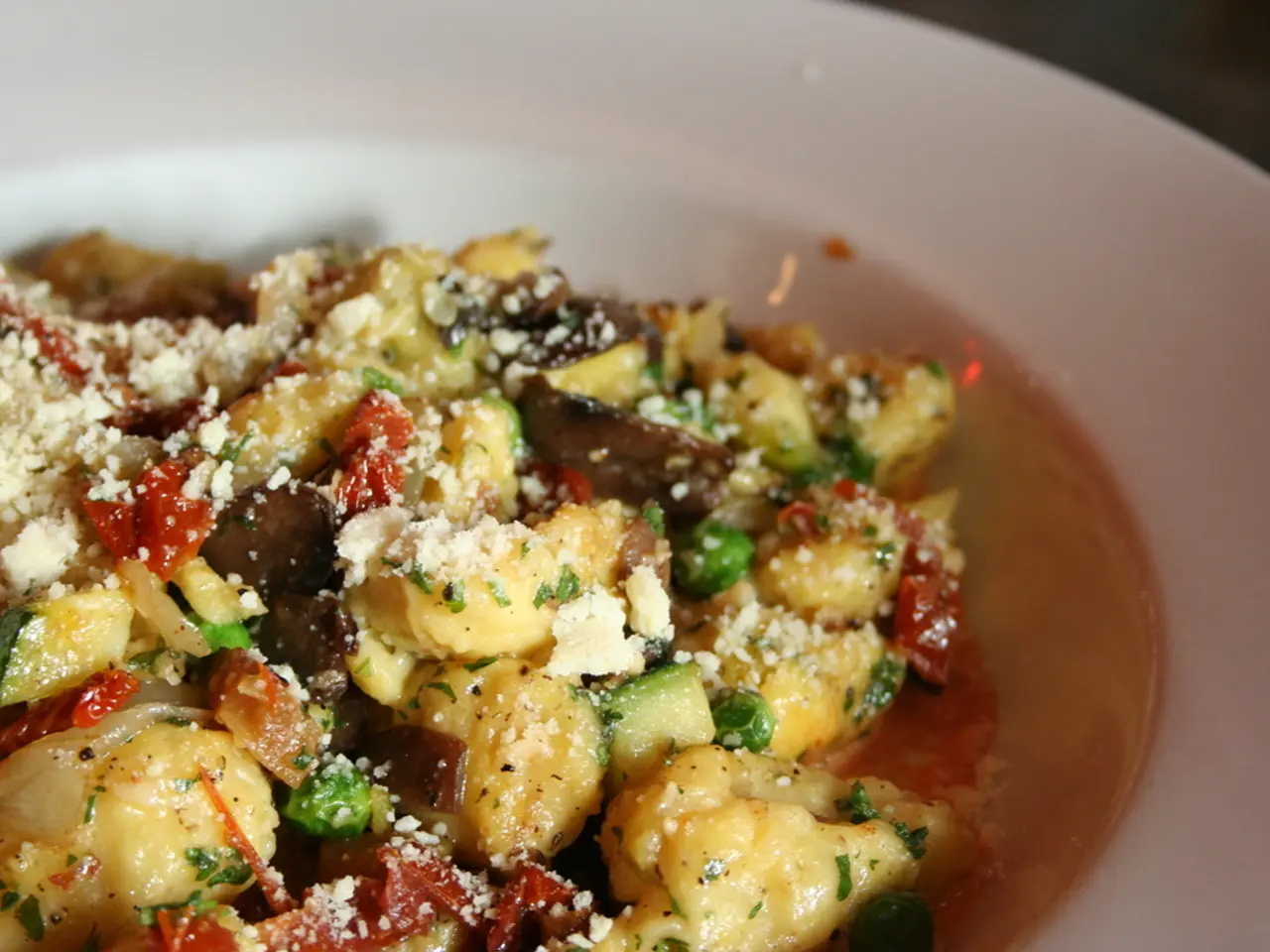Kitchen color combinations can be attempted, provided the correct components are utilized
When it comes to designing a kitchen, the choice of colors can significantly impact the overall look and feel of the space. Here are some best practices for mixing and matching colors in kitchen design to achieve a balanced and cohesive scheme.
Start with a Timeless Foundation
Begin by establishing a foundation using neutrals or soft, muted colors that complement the kitchen's natural light, size, and architectural features. Choose foundation colors you genuinely love for longevity and personal satisfaction.
Coordinate Systematically
To ensure harmony across materials and finishes, coordinate all kitchen elements—cabinets, countertops, flooring, and appliances. This approach prevents piecemeal decisions and creates a cohesive look.
Use Color Ratios and Balance
For visual harmony, consider a 60-40 or 70-30 color ratio, using darker colors sparingly to avoid imbalance. This guidance helps maintain a harmonious look throughout the kitchen.
Introduce Contrast Thoughtfully
Contrast can be a powerful tool in kitchen design. For example, a bold, dark island (navy, forest green, charcoal) paired with lighter perimeter cabinets creates a striking focal point and visual stability, enhancing both aesthetics and kitchen function.
Incorporate Subtle Transitional Colors and Accents
To smooth out stark contrasts, consider pairing matte black cabinetry with white walls but connecting them through neutral or silver-tone countertops. This approach helps avoid harsh divides and creates a more cohesive look.
Develop a Color Theme
Align your color choices with your kitchen's atmosphere and style. Whether contemporary, vintage, or industrial, a theme guides complementary color and metal finishes choices, adding cohesion beyond just paint or cabinet colors.
Test Colors in Real Conditions
Before committing to a color scheme, live with samples under different lighting throughout the day. Lighting dramatically affects how colors appear and interact, so it's essential to test colors in the actual conditions they will be viewed.
Mix and Match Thoughtfully
When considering a mix and match color scheme, choose where to mix and match colors thoughtfully to avoid overwhelming the kitchen. Limiting color contrasts to specific zones, like pairing neutral tones on larger surfaces with pops of color in smaller areas, is effective.
Emphasize Key Features
Emphasizing an island or open shelving with bolder colors ensures the different colors draw attention to the kitchen's best features, without taking away from the overall design scheme.
Avoid Overly Clashing or Highly Saturated Combinations
Overly clashing or highly saturated color combinations can make the kitchen feel chaotic. It's advisable to stick to a cohesive palette of three colors for balance: one dominant color, one secondary color, and a third accent.
By following these guidelines, you can balance personal taste with established design principles, resulting in a kitchen color scheme that feels harmonious, visually balanced, and enduringly stylish.
- To create a balanced and cohesive kitchen design, start by establishing a foundation using neutrals or soft, muted colors that complement the kitchen's natural light, size, and architectural features.
- Coordinate all kitchen elements, such as cabinets, countertops, flooring, and appliances, to ensure harmony across materials and finishes.
- Maintain visual harmony by using a 60-40 or 70-30 color ratio, applying darker colors sparingly to avoid imbalance.
- Introduce contrast thoughtfully in your kitchen design, for example, pairing a bold, dark island with lighter perimeter cabinets.
- To smooth out stark contrasts, pair matte black cabinetry with white walls while connecting them through neutral or silver-tone countertops.
- Align your color choices with your kitchen's atmosphere and style to create a cohesive look and feel that supports your lifestyle.
- Test colors under different lighting conditions throughout the day to understand how they appear and interact in the actual conditions they will be viewed.
- Mix and match colors thoughtfully, limiting color contrasts to specific zones like pairing neutral tones on larger surfaces with pops of color in smaller areas.
- Emphasize key features like an island or open shelving with bolder colors to draw attention to the kitchen's best features, without taking away from the overall design scheme.




